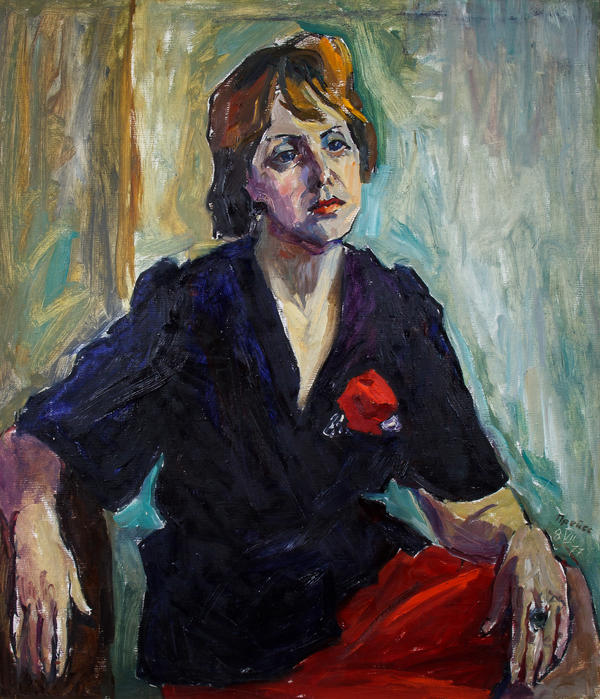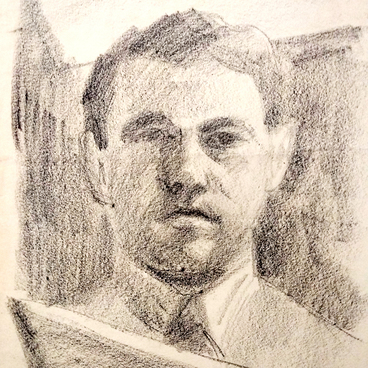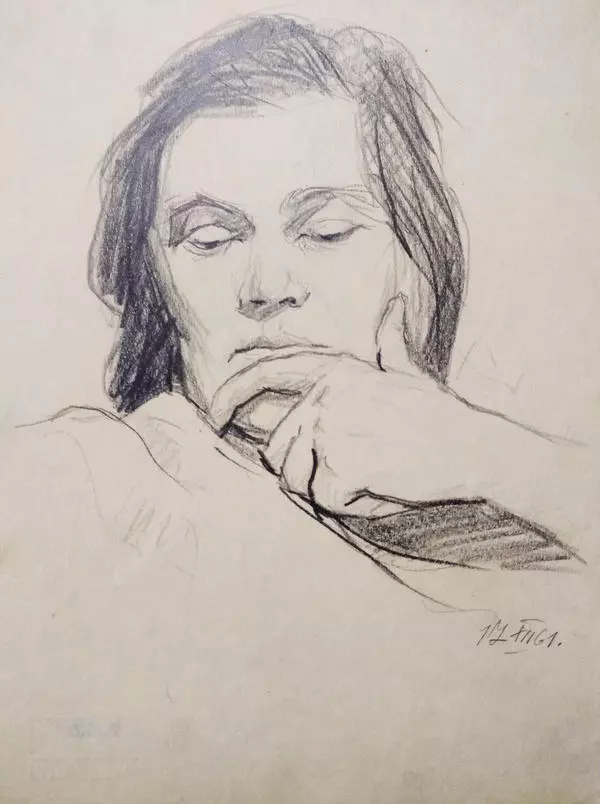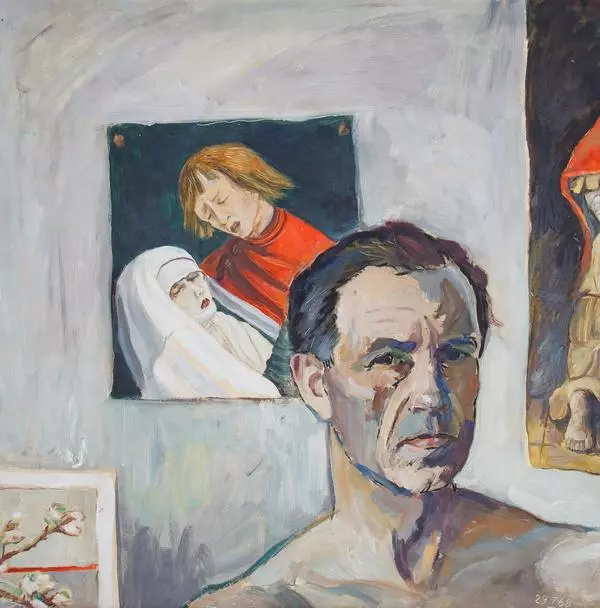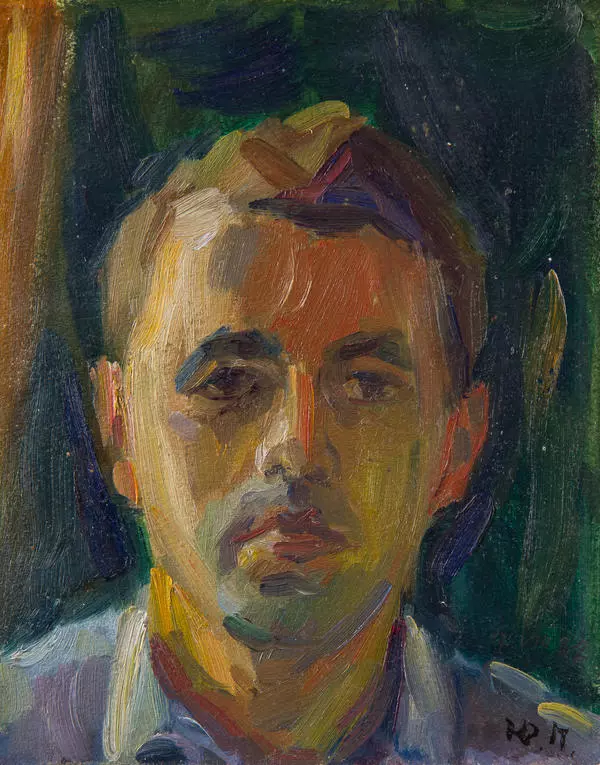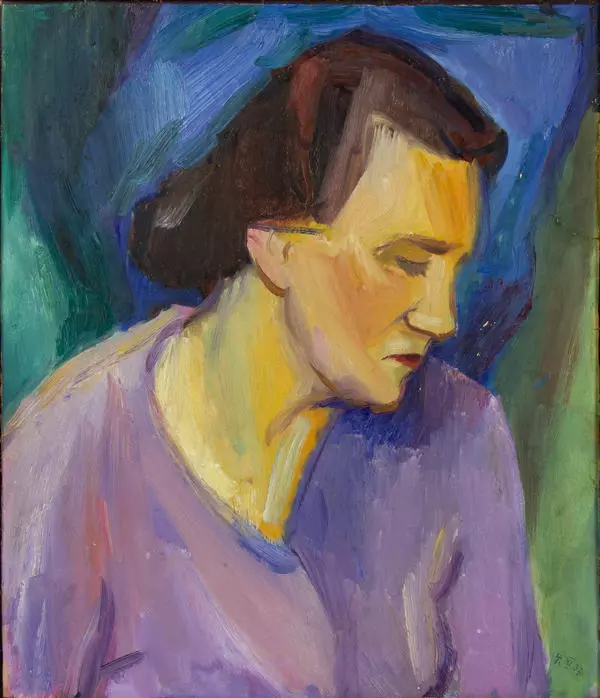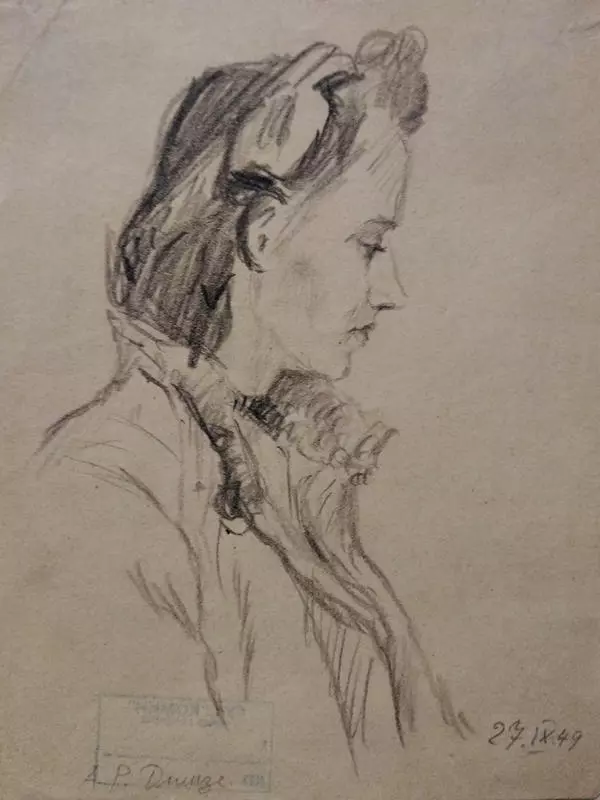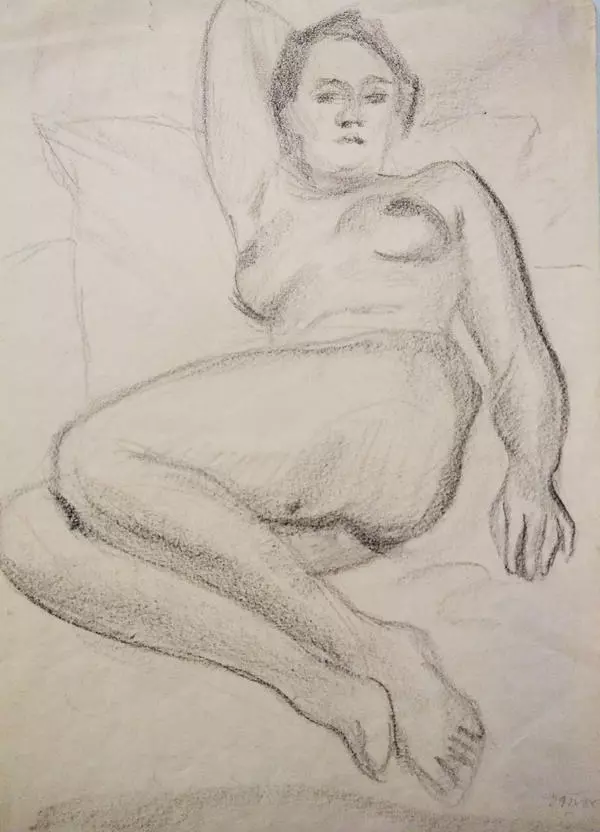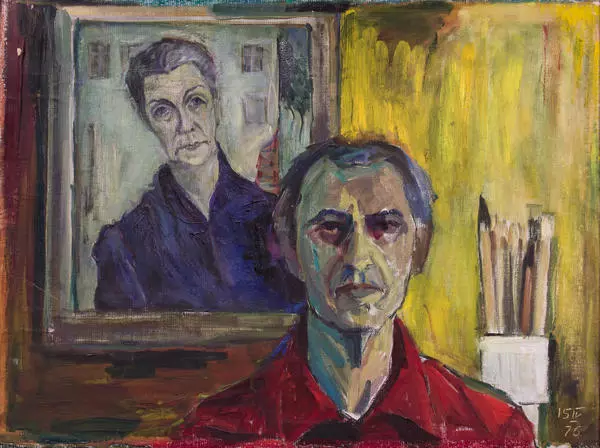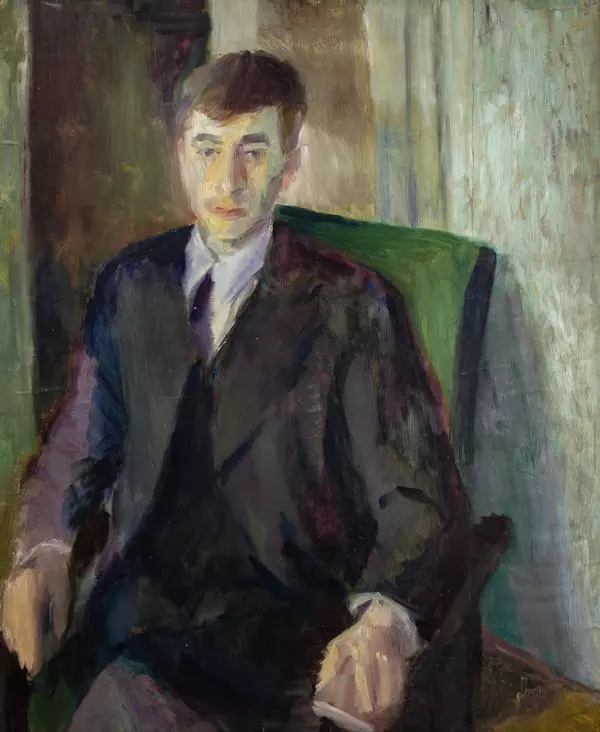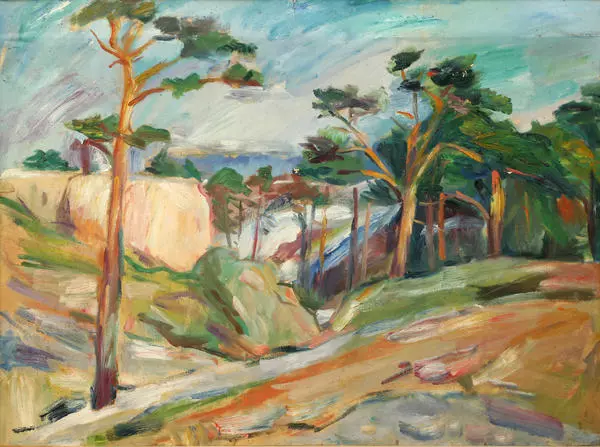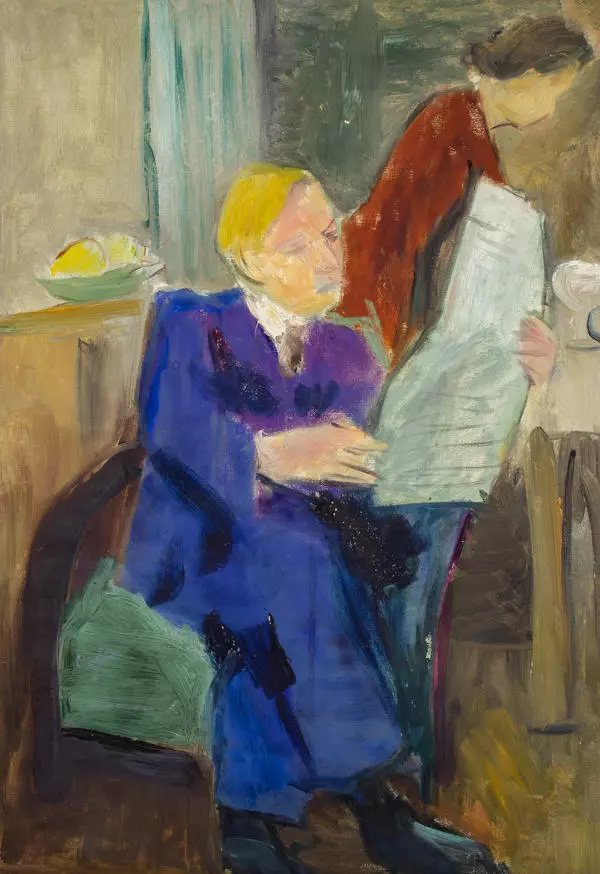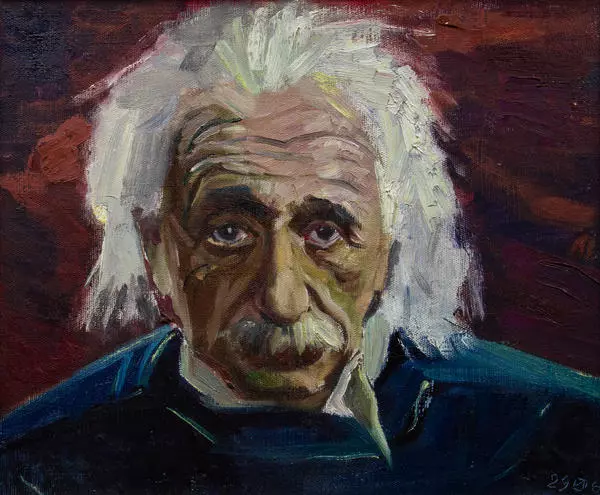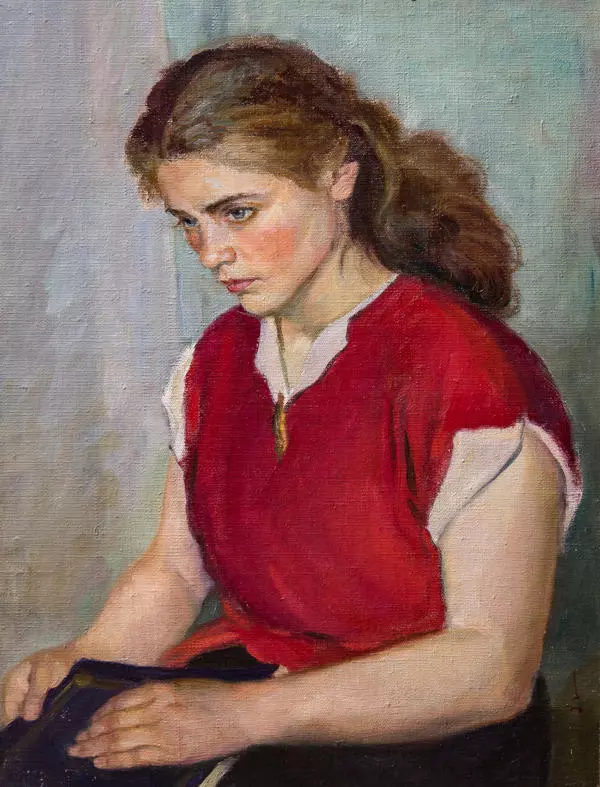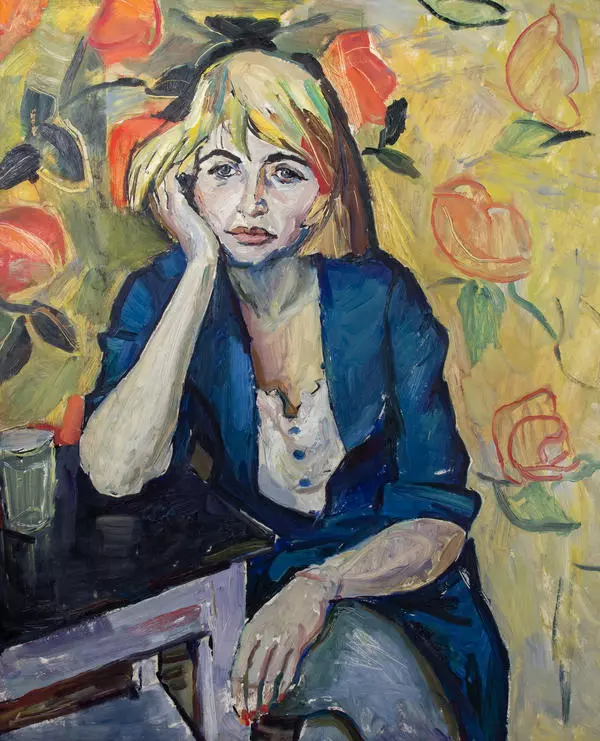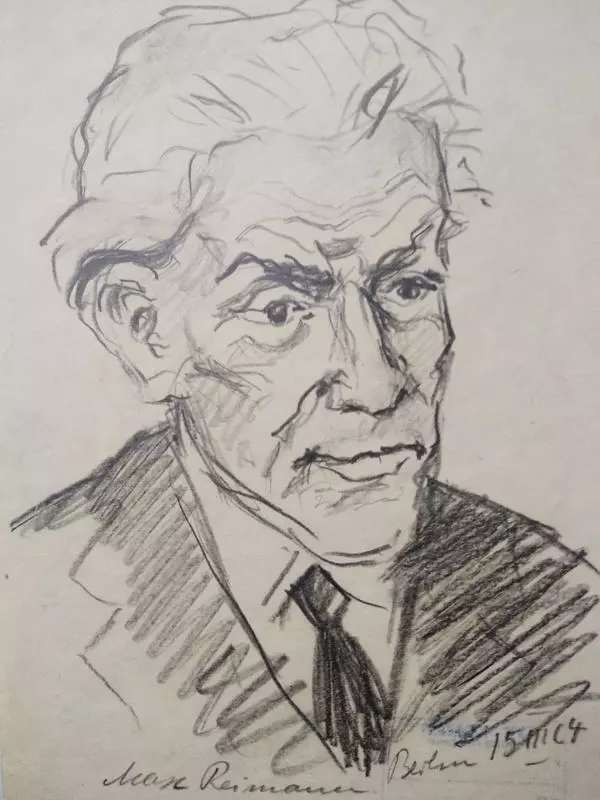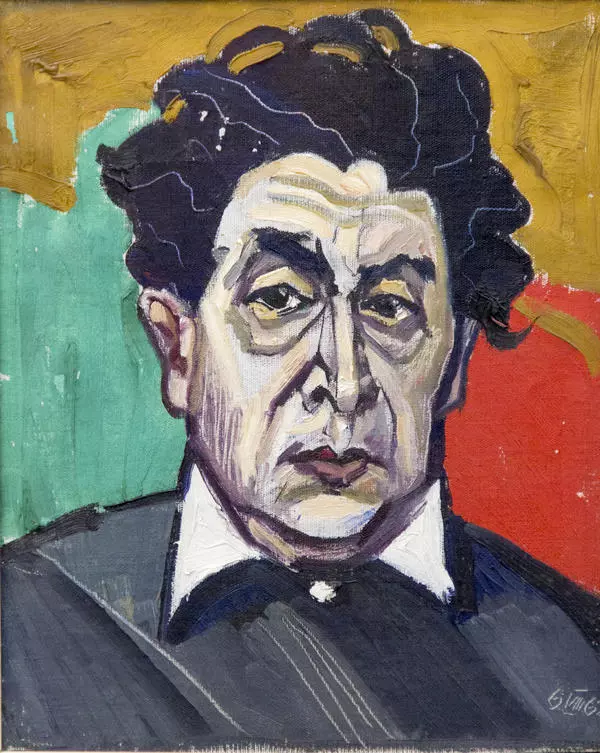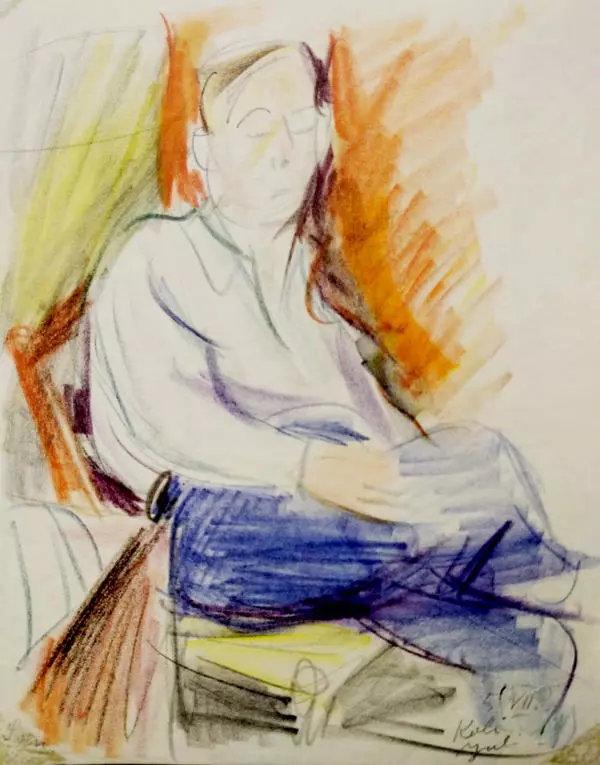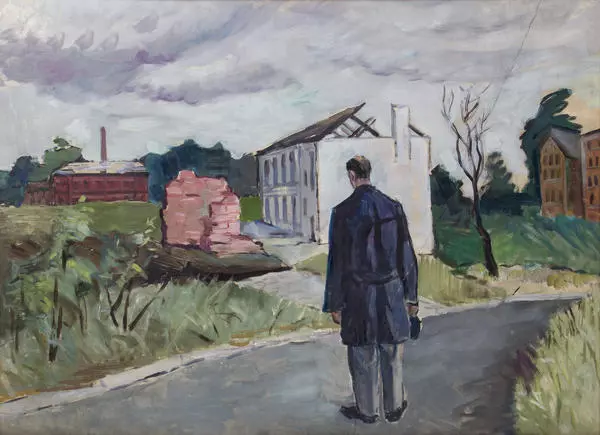The portrait from the collection of the Kemerovo Regional Museum of Fine Arts was painted by a Soviet artist of the German origin, Hans Richard Preuss. He was born in 1904 in Königsberg, graduated from the Königsberg Arts Academy, and was a student of German expressionist artist Arthur Degner. He spoke five languages, travelled a lot and visited almost all European countries. In 1937, he had his first solo exhibition in Paris. It was highly appraised by critics. He was called a master of the intimate portrait as he tried to ‘look into’ the soul of his models and reveal their character. Preuss visited European museums and saw the works of old masters – Rembrandt, Rubens, Velazquez and many others, but was especially influenced by postimpressionists — Paul Cezanne and Vincent Van Gogh.
The artist travelled so much owing to his wife Gertrude Gennis who was a communist intelligence agent. Preuss, too, got infatuated with the idea of world revolution and began working for the USSR’s foreign intelligence.
After the beginning of the Second World War, Preuss, who was ethnically German, was exiled to Siberia. He first lived in Tomsk and then, during his last years, in Kemerovo where he often painted portraits of the employees of the Kemerovo Picture Gallery. It was there that he did the portrait of Galina Bolshakova, a research fellow, and later Director of the Gallery. Her contemporaries spoke of Bolshakova as of a woman of exciting beauty and said the artist had special feelings towards her.
The artist travelled so much owing to his wife Gertrude Gennis who was a communist intelligence agent. Preuss, too, got infatuated with the idea of world revolution and began working for the USSR’s foreign intelligence.
After the beginning of the Second World War, Preuss, who was ethnically German, was exiled to Siberia. He first lived in Tomsk and then, during his last years, in Kemerovo where he often painted portraits of the employees of the Kemerovo Picture Gallery. It was there that he did the portrait of Galina Bolshakova, a research fellow, and later Director of the Gallery. Her contemporaries spoke of Bolshakova as of a woman of exciting beauty and said the artist had special feelings towards her.

